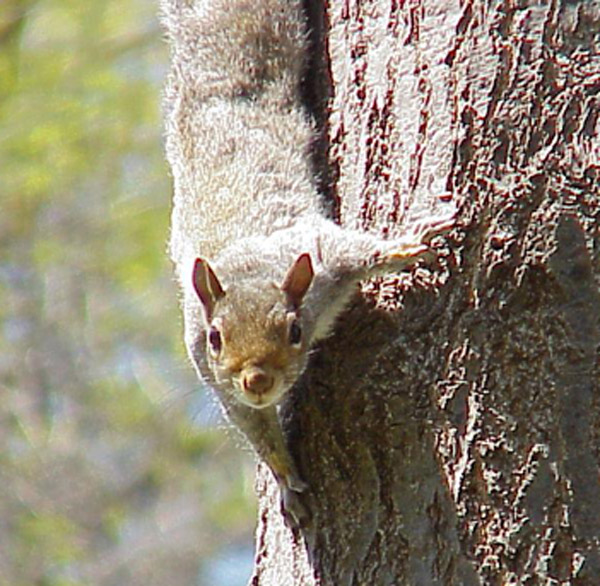
The Habits of the Grey Squirrel
The Grey Squirrel (Sciurus carolinensis) busy themselves with many habits necessary for survival, with feeding habits as a prime concern. As grey squirrels are arboreal (tree) dwellers, most of their food originates from the trees in the usual form of nuts or sap. Grey squirrels are not solely subject to just these forms of food; in the spring and summer they will eat plants, fruit, insects, and bird eggs. For sources of calcium, squirrels will eat deer antlers, bones and turtle shells. In autumn, fungi are another source of food. Let us not forget that if in human populations they will also eat what is provided.
The squirrel is a part of the Rodentia Genus, which makes up 40% of the mammal species. This classification is based on their mastication abilities. Each member of the rodent family develops differently to accommodate their environment, but squirrels, develop incisor teeth that continually grow. Their teeth are heavily coated with enamel and are built up with iron compounds, which colour their teeth a rusty red or orange, and continual chewing maintains a sharp edge. The squirrel also utilize their strong claws to strip away bark from young trees to get the sap, usually from maple trees, as well as use it’s paws to forage for other foods. Squirrels maintain a high level of foraging behaviour throughout most of the day, with a heavier emphasis at sunrise and late afternoon. Much of the time in midday is spent in trees.
The grey squirrel caches a portion of food for reserves during the winter months. They will dig holes that are scattered throughout their home territory and bury food for consumption later. Another aid in their feeding cycle is the olfactory abilities, which are incredible as they are able to smell the cached food with 30 cm of snow on top. This is a result of the caching behaviour, as the squirrel caches the food, the nut is cleaned and then rubbed on the face of the squirrel to attach a scent to the food, in turn allows the squirrel a greater probability of finding the cache during the winter. The grey squirrel also is known to have an excellent memory. When not foraging or caching, most time is spent in den or sunning themselves.
Communication is another habit of the grey squirrel, which is done through vocalization and body signals. The frequency range of the squirrels vocalizations are from 0.01 kilohertz to 10 kilohertz, and tail movement is the second part of the squirrel’s method of communication. Typically vocalization is for the maintenance of territory and hierarchy. The grey squirrel is a territorial mammal and will defend feeding and nesting areas from others. They will chatter, vocalize and chase others from these areas. This behaviour is usually seen in the spring/summer period and is usually less intense in the winter. Non-territoriality in the grey squirrel is seen in their nesting habits during the winter months, as they tend to nest together for warmth because they do not hibernate.
The grey squirrel is a tree dweller that is very adapt at staying in the trees. It receives a great deal of its balance when hopping from branch to branch and tree to tree by use of the tail. By moving its tail, it can offset any changes within its momentum so that it does not fall. The tail also provides a natural blanket when sleeping (which is a behaviour that was not noted). Other behaviours, such as reproduction and nesting habits will be furthered in other pages of the website.
There are several other mammals within the rodent genus and many others within the sciuridae family such as chipmunks, other squirrels, prairie dogs, marmots, and ground squirrels. In much of the available literature, the behaviours of others in the rodent family behave in much the same way especially differing squirrels and chipmunks. On a side note, these differing species can usually live within the same environment but unfortunately not always in harmony. This is especially noted with the introduction of the grey squirrel into the United Kingdom. They in turn invaded the environment causing a depletion of the native red squirrel.

Home I Map of Observation Locales I General Characteristics I Habits I Reproduction and Mating I Social Aspects
Conservation I Personal Observations I Pictures I Sounds of the Squirrel I References I Sites of Interest